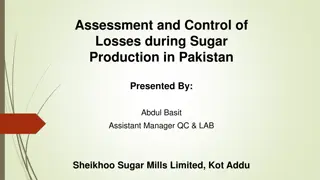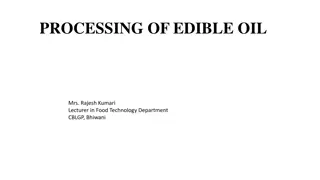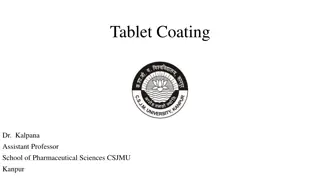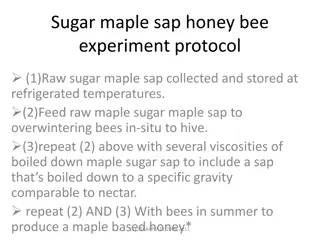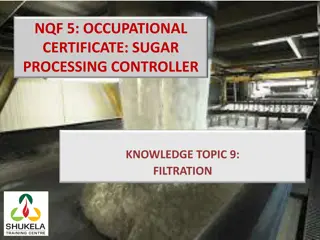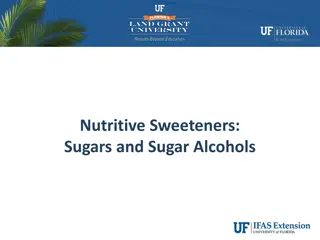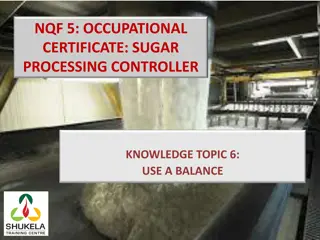Journey of Refining Sugar: From Raw Material to By-Products
Explore the detailed process of refining sugar from raw material to final product, including heating, mixing with lime, CO2 saturation, charcoal filtration, and crystal drying. Learn about the utilization of by-products like bagasse and press mud in fuel production, paper manufacturing, and as natural fertilizer.
Download Presentation

Please find below an Image/Link to download the presentation.
The content on the website is provided AS IS for your information and personal use only. It may not be sold, licensed, or shared on other websites without obtaining consent from the author. Download presentation by click this link. If you encounter any issues during the download, it is possible that the publisher has removed the file from their server.
E N D
Presentation Transcript
Melting and mixing with lime ph increase to 10
Saturation of melted sugar with CO2 reduction of ph to 7
Heating and passing through charcoal filter (continuous rotary pressure filter)
Repeat process as with brown sugar i.e. spraying with water under centrifugation
White sugar crystal dried in a rotary drier
For manufacture of wrapping paper and cardboard
Press mud (sediment got after clarification process)
Wax obtained from press mud is used for shoe polish
Molasses (one of the products crystallization process)
Used for seasoning and flavouring food and various vegetable preserves
Used extensively in cookery and confectionery, beverages and medicine
Capscum sp (chilli) annum/frutesance, ginger, zyngiber officinale, syzygium aromaticum (clove), pepper (Piper nigrum) occinum gratissum, xylopia aetlopica, Efinrin (Piper guineense)
Garlic (Allium sativun), onion (Allium cepa, Aidan (Tetrapleura tetraptera)
A substance such as salt, pepper that is used to give flavor to food or that is eaten with food. They came mostly seasonal products described form other materials.
solanaceae. Chill is native to tropical America and West Indies and was introduced to other parts of the world including Africa and Asia. The plant is a herb or under shrub, extensively cultivated in all tropical countries.
responsible for its pungency is capsicin contained in the fruit wall. Chillies are used all over the world as a condiment in raw ripe or dried form. They are also used for flavouring salads, soup, sauces, etc. The dosed fruit is ground into fine powder and sold as Cayenne pepper. Extracts from chillies have many pharmaceutical uses.
Nigeria. They also thrive well in other parts of the tropics such as Sumatra, Jamaica, Brazil where they are also cultivated. Cloves are very aromatic and are widely used in curries, pepper soup and medicine. Clove oil is extracted from the unripe fruit and leaves and used for medicinal purpose especially for tooth ache and some toilet products. Clove oil is unnecessarily used as a cleaning agent in histological works.
leaves. The plant reaches a height of 3-4 feet, the leaves growing to 6-12 wider long. It is usually used to lend fragrance and progency to some food preparations. An essential oil contained in it is responsible for the aroma. An Oleoregin (Gingerin) gives it its pungent taste. It is used medicinally as stomacharic, carmnatine appetizer stimulant and as digestive.
condiments particularly in fish and meat preparations where they also serve as tendernizer. They are also used in various fruit and vegetable preserves. It has some important medicinal properties. It is an effective remedy for high blood pressure, rheumatic and muscular pains. It is digestive and curative and removes pain in the bone. It heals intestinal and stomach ulcer. It is regarded as nature s best antiseptic for the goat, it is a good
extensively from Sierra Leone to Cameroon. Tree up to 90ft high and 6-7ft in girth. The seeds aer used as a gradient and known as African nutmeg.









